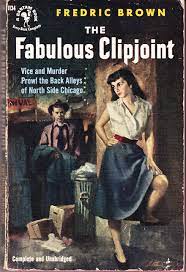Review: Starman's Quest, by Robert Silverberg
by Rich Horton
Recently I was glancing through the ISFDB entry for Robert Silverberg, looking mainly at his early novels (written in the 1950s), and I realized that I had read nearly all of them. It is perhaps a silly thing to be completist about -- trying to read the products of a young and very prolific writer who had not yet fully mastered his craft, and, worse, who was not yet writing with real ambition -- instead, by his own account, spending much of his time producing yardgoods to fill magazines under a contract whereby the editor would accept a certain number of words per month essentially sight unseen. (It should be said that Silverberg in this period was already sufficiently competent that this early work remains consistently readable, and occasionally interesting, but it is never outstanding.) Indeed, when I mentioned to him that I was having a hard time finding a couple of his early books, he suggested it would be much more rewarding to reread Downward to the Earth instead -- and likely he was right.(For that matter, even if I finish all these early SF novels, the ones by Silverberg as well as by "Calvin Knox" or "David Osborne", there will still be rafts of work from other genres, such as the crime fiction and soft porn he wrote under such names as Don Elliott, Loren Beauchamp, and Stan Vincent.)
All that said, I did find a copy of Silverberg's 1958 novel Starman's Quest, published by Gnome Press, for a reasonable price. (The novel had a 1969 reprint, and a more recent trade paperback edition is available, which may make used books more affordable.) It seems to be the only form of this story -- many other Silverberg novels were originally published as novellas. (Indeed, sometimes one version was under Silverberg's name, and the other as by one of his pseudonyms, which made the pseudonyms pretty open! (I don't think Silverberg minded.))
Starman's Quest begins with an introductory fictional quote from an essay, discussing the Lexman Spacedrive, which allowed what Ursula Le Guin later dubbed NAFAL ("Nearly as fast as light") travel between stars; and also mention one James Cavour's failed attempt at a hyperdrive. Thus, in the year 3876, the settled worlds are linked by a fleet of starships, crewed by "Starmen", who typically live their entire lives on ship. Due to the Fitzgerald Contraction -- that is, more familiarly, time dilation -- their lives extend for hundreds of years objective time, but only a normal span subjectively. As the novel opens, the Valhalla is returning to Earth from a trip to Alpha Centauri. Alan Donnell is just turning 17. His father is the Captain. Alan himself is a twin, but his brother Steve jumped ship the last time they were at Earth. Alan wants to track down his brother, against his bitter father's wishes, though he knows that Steve is now nine years, subjective, older than him. Alan is also obsessed with the research of Cavour -- what if Cavour's discoveries really could lead to a working hyperdrive?
All this, really, is potentially fuel for a fascinating book. The sociological effects of the slower than light travel, the Starmen who are always years out of date when they come to a new planet, are worth exploring. The effects of a sudden change to hyperdrive, were it too happen, are also worth a look. There are other worthy ideas -- Alan's ratlike "pet", actually an intelligent alien from Epsilon Eridani, is one. The horribly crowded and cramped society on Earth is another. Alan's relationship with his father and his "older" twin brother could be interesting, and so too the surely unusual society of the starships -- with just a couple of hundred or so people on each. Thing is, Silverberg really doesn't do justice to any of these aspects, and the only one he tries to cover is Earth society.
Anyway, Alan decides to leave the Enclave where the Starmen stay, and go look for Steve. Alas, finding one person in a huge city is all but impossible. Especially as Alan doesn't understand Earth customs at all. Luckily, he is saved from jail or a beating or worse by a guy named Max Hawkes, who turns out to be an expert gambler. It seems that gambling is about the only job available for people not born into a profession. Max helps Alan find Steve (rather luckily) and then gives him an offer -- stay on Earth, and he'll teach him how to gamble ... and Alan takes him up on it (after returning Steve to the Valhalla) -- largely because Alan thinks that on Earth he can study James Cavour's work and maybe find more hints ... To be sure, though, Max will exact a price for his assistance ...
Things work out a) pretty much as you will have expected; and b) involving a lot of sheer ridiculous luck. Leading to a cute enough if all too convenient conclusion, and leaving all the interesting questions I had about this future society unanswered.
So -- is it a good novel? No. Is it readable? Yes -- Silverberg was from the beginning a competent writer who could keep your interest. Does it hint at the writer Silverberg became? Not really, except in that it does have the seeds of some pretty worthwhile ideas.








.jpg)